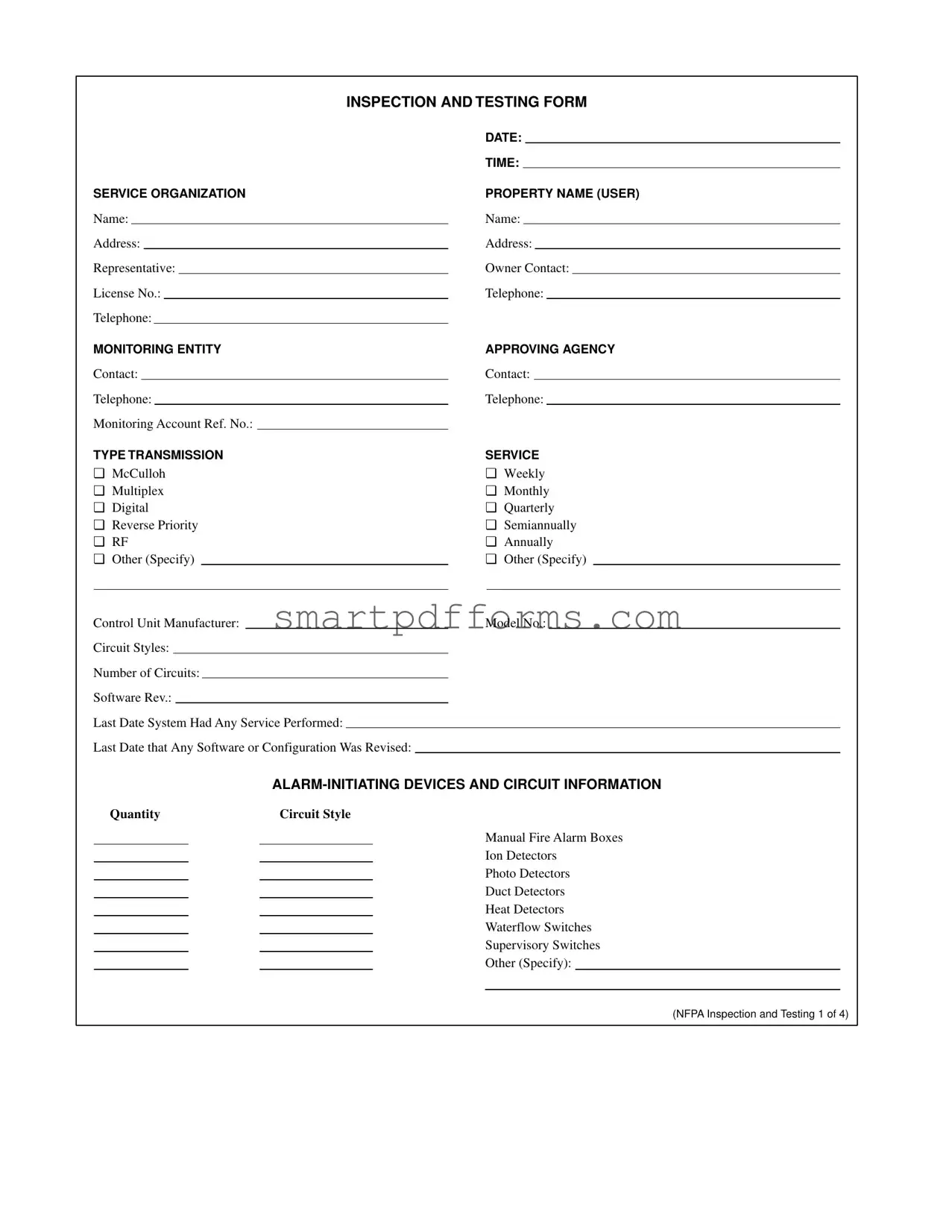Blank Nfpa Testing PDF Template
The NFPA Testing Form serves as a comprehensive guideline for the inspection and testing of fire alarm systems, detailing the required procedures to ensure these systems are functioning correctly and comply with NFPA standards. It covers an extensive range of components, including but not limited to alarm-initiating devices, notification appliances, supervisory signal-initiating devices, signaling line circuits, and system power supplies, each section meticulously designed to verify the reliability and operational integrity of every element within a fire alarm system. To ensure the safety of your property and adhere to regulatory standards, click the button below to fill out the NFPA Testing Form.
Make This Document Now




